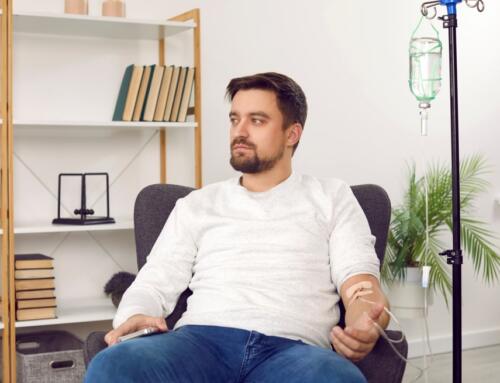Step outside after it rains and your senses are met with a fresh, clean scent. What you’re smelling is ozone, a molecule that is created by electricity during a thunderstorm, lingering in the environment.
In medical settings, ozone has been used to treat conditions for over a century. Medical ozone is made from medical-grade oxygen sources. IV ozone therapy in the form of gas or a gas/liquid mixture is used to treat many conditions, and have positive impacts such as improved energy or stronger immune function.

Ozone Therapy for Lower Backpain
This article is all about ozone therapy, how it works, how it is applied, and how to safely and effectively receive IV ozone therapy.
What Is Ozone Therapy?
Ozone is a gas made up of three atoms of oxygen. Its structure makes it different from the oxygen molecules that we breathe. The unique composition of ozone is what makes it a powerful molecule that can have many benefits in the body.
Ozone therapy is the controlled process of administering small amounts of ozone gas into your body to treat a health condition or concern. IV ozone therapy works by stimulating the immune system, as well as delivering useful oxygen and free radicals to your tissues. When ozone enters the body, many complicated reactions can occur involving the oxygen atoms, including the generation of peroxides, cell membrane reactions, and tissue oxygenation.
What Does Ozone Therapy Treat?
The increased oxygen supply in the body can accomplish many things. Research has shown that ozone therapy can treat a variety of different medical conditions including:
- Infections (viral and bacterial)
- Autoimmune disorders
- Breathing disorders
- Arthritis (both osteo- and rheumatoid arthritis)
- Diabetes and complications from advancing disease
- Cardiovascular illness (such as heart disease or circulatory disorders)
How is Ozone Therapy Applied?
Ozone therapy should always be administered by a trained healthcare provider, such as a naturopathic or medical doctor, who will discuss with you the best treatment options available for you. The main methods of ozone administration are:
- Intravenous therapy
- Intramuscular or Intra-articular injection (joints)
- Insufflation (gas infused into areas such as the vagina or rectum)
- Direct tissue application (such as limb bagging for infectious or ulcerated tissues)
Final Thoughts
IV ozone therapy can be a powerful and effective treatment, however, it must be administered professionally and competently. Because of ozone’s nature as a powerful oxidant, careful considerations must be given to the route of administration, dosing, and appropriateness in the greater context of your health. Always consult a doctor if ozone therapy is the right option for you.









